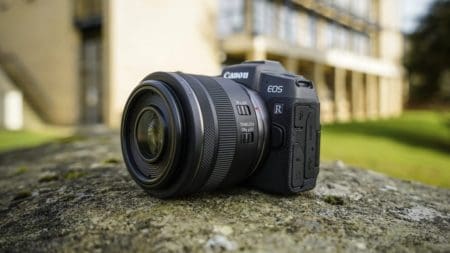The feel of the Nikon D780 gives a sense of its performance. It’s solid and delivers what you hope in most situations.
Interestingly, the improvements made to the Live View AF system meant that I used the D780 in Live View mode much more than I have any other Nikon DSLR. Even with mirrorless cameras, I tend to favour the viewfinder, but I found myself using the D780’s screen quite a lot.
In some cases that was because I was shooting at a low level and it avoids the need to lie on the ground, but it was also because it’s useful to have the electronic level visible to ensure horizon isn’t wonky.
In addition, shooting in Live View mode brings the ability to preview the image with all the camera settings applied. That’s especially useful when you’re shooting landscapes and you want to capture every scrap on detail and tone possible.
Another advantage of shooting in Live View mode with the D780 is that you can set the AF point far closer to the edges of the frame than you can when you shoot using the viewfinder.
Autofocus
When images are composed in the D780’s viewfinder, its autofocus system performs brilliantly. It’s fast and accurate even with speeding subjects. And with the right AF mode, it can track subjects around the frame.
It also copes very well with low light conditions. In fact, I managed to get it to focus in near darkness.
However, the 51 points are clustered quite close around the centre of the frame and that means you either have to focus and recompose or crop images with some off-centre subjects. As I’ve mentioned, there’s no such issue with the Live View AF system, you can tap on the screen very close to the edge of the frame and it will focus.
Until now Nikon has stuck with a contrast detection system for its DSLRs in Live View, and it’s pretty ponderous. Thankfully, as I’ve already indicated, the D780 makes a big leap forward with its hybrid AF system. It’s fast and decisive, even in quite low light.
Nikon D780 Image Quality
The D780 controls noise well up to around ISO 25,600. At this point raw images have a fine granular texture at 100% on-screen but it’s not problematic. Simultaneously captured Jpegs look a little smoother and softer than the raw files, but they’re still acceptable.
Going above this value results in more visible noise in raw files and Jpegs that look too smooth. The highest expansion value (ISO 204,800) is best avoided unless you need an image for record purposes.
Nikon’s recent full-frame cameras have a good reputation for dynamic range and the D780 continues in this vein. That means that there’s a good range of tones and the highlights don’t burn out too quickly.
However, if you need to underexpose to preserve detail in the brightest parts of the scene, the shadows can withstand hefty brightening. I’ve successfully brightened low-ISO dark images by 3.5Ev or more.
Exposure and Colour
The D780’s screen gives an accurate preview of the exposure and colour of the final image when you’re shooting in Live View mode. And in reflex mode, when the viewfinder is in action, the Matrix metering is reliable. In fact, I found it delivers great results in tricky situations such as when the scene is very bright.
On the colour front, there’s a collection of Picture Control modes to help you get the look you want direct from the camera. The Standard setting is a good all-rounder but it’s worth experimenting with the others and even creating your own using Nikon’s Picture Control Utility 2 software.
There are some Creative Picture Control modes that produce very effective results. The Bleached mode, for example, is great for capturing a desolate ‘Game of Thrones’ look.
The D780 also has a collection of four auto white balance variants and again they are worth investigating to get a result that you like in-camera. However, Auto1 (Keep overall atmosphere) and Natural Light Auto are good choices for natural light photography.
Nikon D780 Battery Life
According to Nikon the D780 has a battery life of 2,260 shots when the viewfinder is in use. That’s a lifespan that mirrorless cameras can currently only dream about.
I took a couple of spare batteries when I was in Iceland and despite shooting many images, recording a few clips of video, reviewing images and using the SnapBridge auto-transfer feature, I never had to swap the battery during the day.
That’s especially impressive given the low temperatures and considering that I shot in Live View mode quite a bit.
It’s also reassuring to know that you’re unlikely to need to open that battery compartment door when you’re standing in a gale on a beach with pounding waves and blasting sand.
Read our Canon EOS 6D Mark II review












